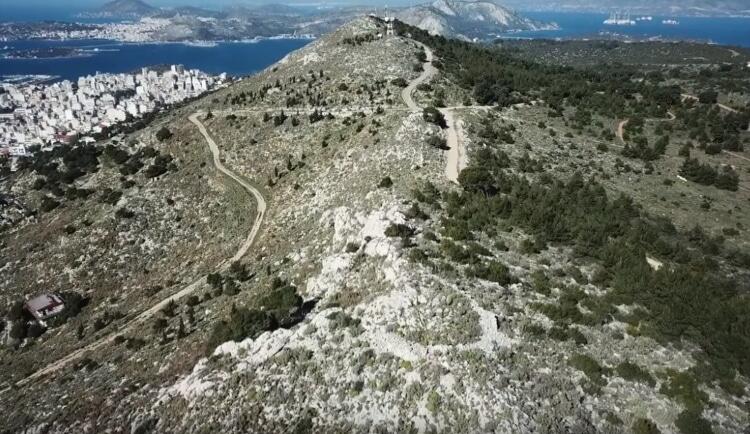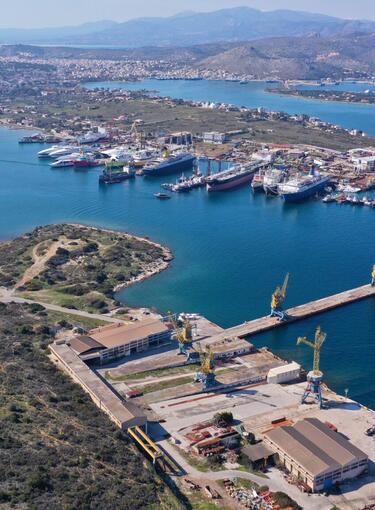Xerxes, the Great King of the Persians, had settled with his staff on Mount Egaleo from where he thought he could enjoy his triumph, his victory at Salamis and his dominion over all Greeks. Moreover, he thought that he would be able to oversee the battle from his throne and discern which of his officers would distinguish themselves in battle, so that he could take note of their names and honour them as he saw fit. However, he was soon disappointed. As the Naval Battle began, the first terrible realization both of Xerxes and the other observers was that, due to the extreme confusion that prevailed, it became impossible to distinguish, at the location of the engagement, who was an ally and who was an enemy. The Persians seemed to be fighting in panic, almost blindly. In fact, aware of the fact that their King was on the hill watching them, they tried to distinguish themselves before his eyes through their exploits and they fell into battle with violent passion, which only served to intensify the chaos. Xerxes called a war council and, while he initially proposed to quickly build floating bridges over the straits of Salamis in order to attack the Greeks, he recognized that the Athenian fleet, now in complete control of the region, would not allow such a thing. The Persian King was overwhelmed by the great fear that the Greeks, in their fury, would destroy the bridges of the Hellespont and trap the Persians in Europe. As quickly as possible, Xerxes organised the largest part of his army and hurried north, to cross the Hellespont and return defeated to Asia.
Βασική Βιβλιογραφία
- Bury John – Meiggs Russell, Ιστορία της Αρχαίας Ελλάδας: Μέχρι το Θάνατο του Μεγάλου
- Αλεξάνδρου, μτφρ. Ρούλη Τατάκη, Κ. Ν. Πετρόπουλος, Άννα Παπαδημητρίου Γραμμένου,
- Κωνσταντίνος Μπουραζέλης, Άγγελος Ματθαίου, Αθήνα 2011.
- Lefèvre François, Ιστορία του Αρχαίου Ελληνικού Κόσμου, μτφρ. Αναστασία Κεφαλά, Μίνα
- Καρδαμίτσα, Αθήνα 2016.
- Αντωνοπούλου Ζέτα, Τα Γλυπτά της Αθήνας: Υπαίθρια Γλυπτική 1834-2004, Αθήνα 2003.
- Καραΐσκου Βίκυ, Νεοελληνική Γλυπτική: Ματιές και αναγνώσεις, Αθήνα 2011.
- Παυλόπουλος Δημήτρης, Από τον Ιερό Λόχο στον Κωνσταντίνο ΙΒ’: Νεότερα Αθηναϊκά
- Γλυπτά, Αθήνα 2020.
- Παυλόπουλος Δημήτρης, Ζητήματα Νεοελληνικής Γλυπτικής, Αθήνα 1998.
Βασική Δικτυογραφία
http://www.athenssculptures.com
https://explore.cure-project.gr
https://www.thisiscrete.gr/gr/historical-monuments
Πληροφορίες





